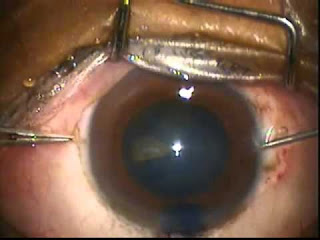Corneal diameter is determined by
the horizontal White to White (WTW), as it has significant clinical implications
for the successful completion of the cataract surgery. The mean horizontal white-to-white (WTW)
corneal diameter is needed to determine the diameter of the intraocular lenses
to be implanted after extracting the affected clear lenses in the cataract
surgery. Traditionally, calipers are used to measure the diameter of the cornea
manually. With mechanization and automation in every field, IOLMasters have
taken up this task.The present study tries to compare whether the traditional
means of manual measurement, using calipers is effective or the IOLMasters are
fruitful in serving the task?
Measurements related to
microphthalmia, relative anterior microphthalmia, microcornea, macrophthalmia,
and macrocornea are crucial to determine the corneal diameter as surgeons rely on the
measured corneal diameter for sizing the intraocular lenses. However, no two
sources of information provide exact estimation of the normal horizontal
corneal diameter, as most of these texts are written when the automated means
of IOLMasters were not available. While
some sources define microcornea in the range of 10.0 to 11.0 mm the other
sources put it around 12.5 to 13.0 in adults. The current accepted standards of
normal WTW at present is greater than 11.0 mm and less than 13.0 mm.
Authors Tina H Chen and Robert H Osher for the present study
have made a retrospective chart review of cataract surgery for 516 patients by a
senior surgeon at the Cincinnati Eye Institute (CEI) from September 2010 to
November 2012. The patients had cataract surgeries in one or both eyes Pre-operative
measurements with the IOLMaster, including unilateral or bilateral measurement
of the horizontal WTW corneal diameter were recorded. Manual caliper
measurements were performed by adjusting the calipers under the microscope by
placing each tip and the data was analyzed using SPSS.
Corneal diameters measured with the calipers
and the IOLMaster did not correlate significantly with age as assessed with
both linear correlations. Males had slightly but significantly larger corneal
diameters as compared to women with both calipers. There was no difference in
corneal diameters of left versus right eye with both calipers (p=0.09) and
IOLMaster
The study found that WTW measurements produced by the IOLMaster were slightly but significantly smaller than caliper WTW measurements, so these two devices should not be considered interchangeable when future population studies are conducted. The study concludes that macrocornea as a WTW measuring larger than 13.2 mm and supports the current definition of microcornea as WTW measuring 11.0 and smaller.







